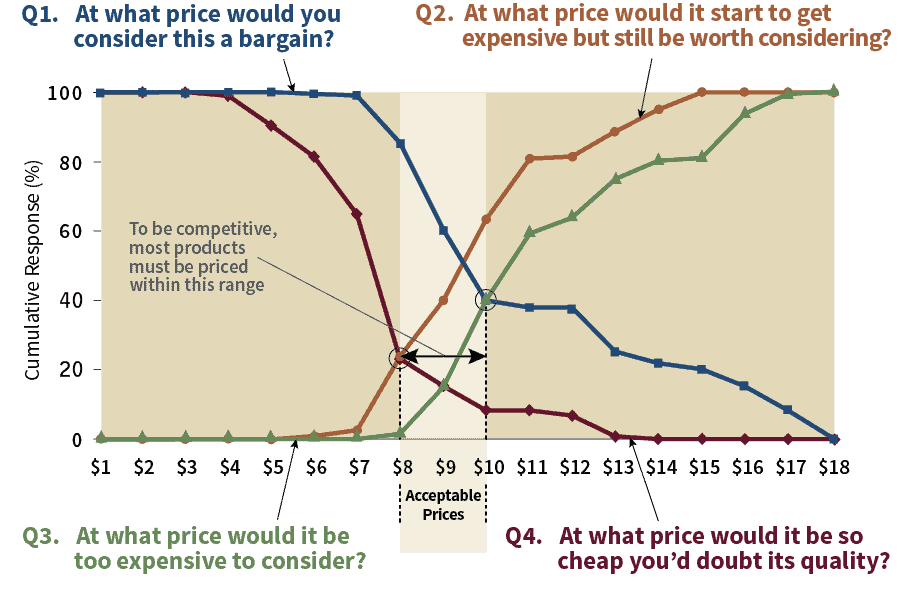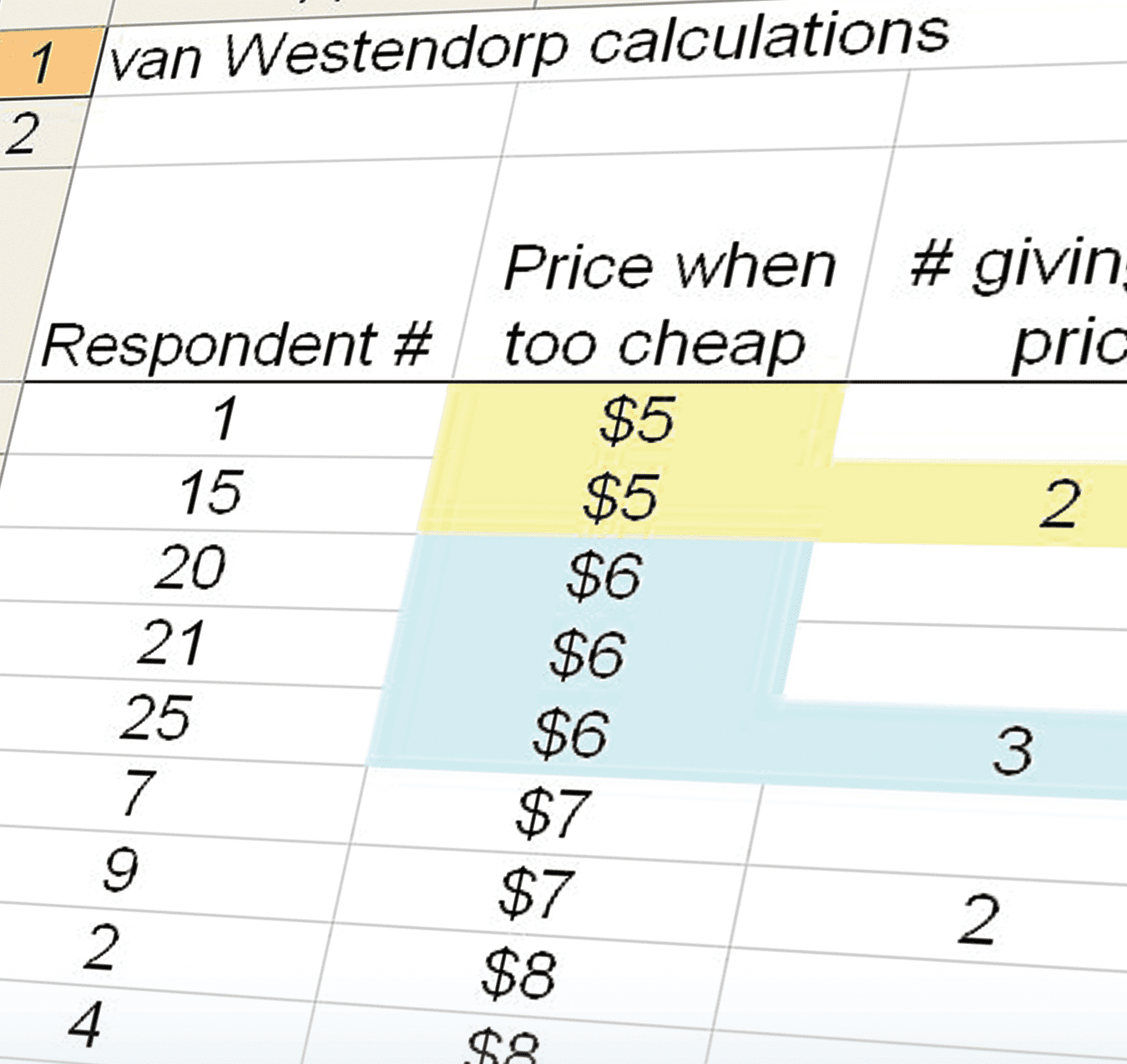Setting the right price
Simple model reveals the acceptable price range
Setting a price can be one of your toughest marketing challenges, but the van Westendorp Price Sensitivity Meter¹ helps point you in the right direction in three simple steps:
- Show prospective customers a product description or sample.
- Ask four simple questions.
- Plot the cumulative results.
Of course, you have to know what questions to ask. Here they are:

van Westendorp Price Sensitivity Meter
Plotting responses to price sensitivity questions identifies a range of prices acceptable to your market ($8 to $10 in this example), but there’s more to it than that (see below). You’ll have to marry the acceptable price range with your business objectives. You’ll also need to consider variables such as margin, ROI and volume to zero in on the right price for your situation.
EXECUTIVE SUMMARY
- Measuring price sensitivity is a fast, simple and inexpensive method to help determine a range of market-acceptable prices.
- Price sensitivity questions assume the product or service is desirable at some price.
- A price sensitivity survey can be a good exploratory step for highly innovative products where price range is uncertain.
- The results of a price sensitivity survey provide a starting point for further analysis.
Add purchase intent to your price survey
The simplicity of the van Westendorp pricing model makes it easy to understand and implement. But its simplicity also limits the information it generates. Determining respondents’ range of acceptable prices doesn’t indicate their likelihood to purchase a product. Asking two additional questions can help determine purchase intent:
- How likely would you be to buy the product at the “so cheap” price? (Q4)
- How likely would you be to buy the product at the “start to get expensive” price? (Q2)
With additional analysis, these questions will help marketers understand demand as a function of price.
Limitations of the model
Users of van Westendorp modeling find some respondents give inconsistent answers, such as quoting a “so cheap” price (Q4) that’s higher than their “bargain” price (Q1). And as with most price-related questions, respondents may quote lower prices than they are actually willing to pay.²
Some other limitations:
- For almost any product that’s not a line extension, respondents won’t have a good baseline reference point on which to formulate their response. This is also true for new technology and product categories.
- It’s best to measure price sensitivity early (perhaps as soon as product features, advantages and benefits have been established) as an indicator of product viability.
Put van Westendorp to work for you
Even with its limitations, price sensitivity measurement can be a useful step to establish the right price when appropriate pricing is not clear, or even to investigate opportunities to increase price. (See 5MetaCom’s Marketing Insights titled “Don’t believe your price is too high without proof.”) And because van Westendorp surveys can be implemented easily via website, email or in person, they provide a cost-effective way to generate useful information.

Plotting your data
To produce the characteristic X-shapes of van Westendorp pricing graphs, marketers must determine the cumulative response up to each potential price point to capture all respondents who would accept or reject that price. Then, plot the percentages to identify a range of acceptable prices rather than a single optimum price point. Here’s how to do it:
- Determine the percentage of respondents naming each price.
- Determine the percentage of respondents at and below each price to show the cumulative response.
- Subtract cumulative responses from 1 to determine the percentage of respondents (e.g., for 8%: 1 – .08 = .92, so plot 92%).
- Plot the distribution. Then do the same for the other questions.
¹ van Westendorp, P. (1976). NSS – Price Sensitivity Meter (PSM): a new approach to study consumer perception of price. Proceedings of the ESOMAR Congress.
² Lyon, D. (2008). The price is right (or is it?). Marketing Research, Winter 2002; p. 8-10.
